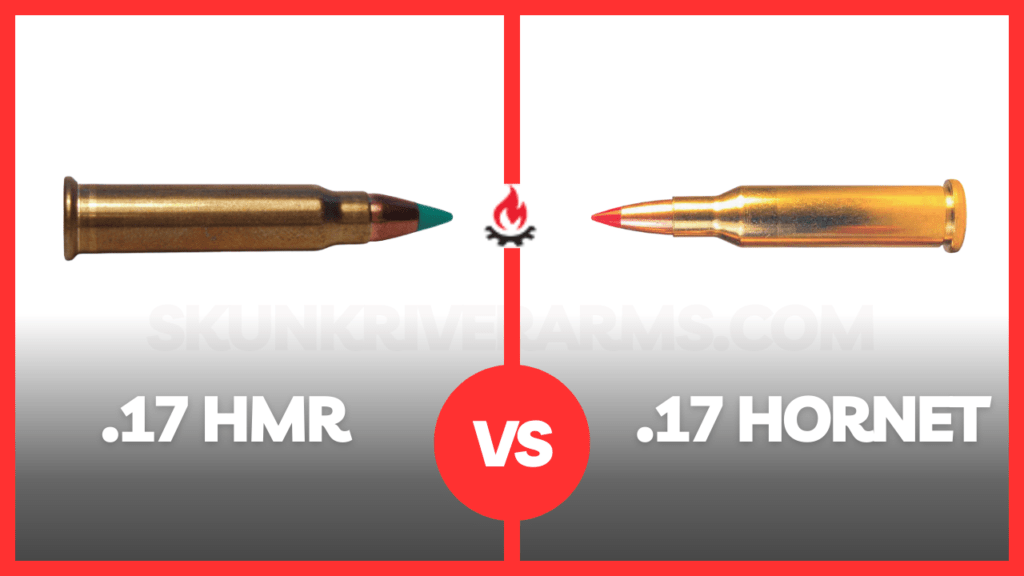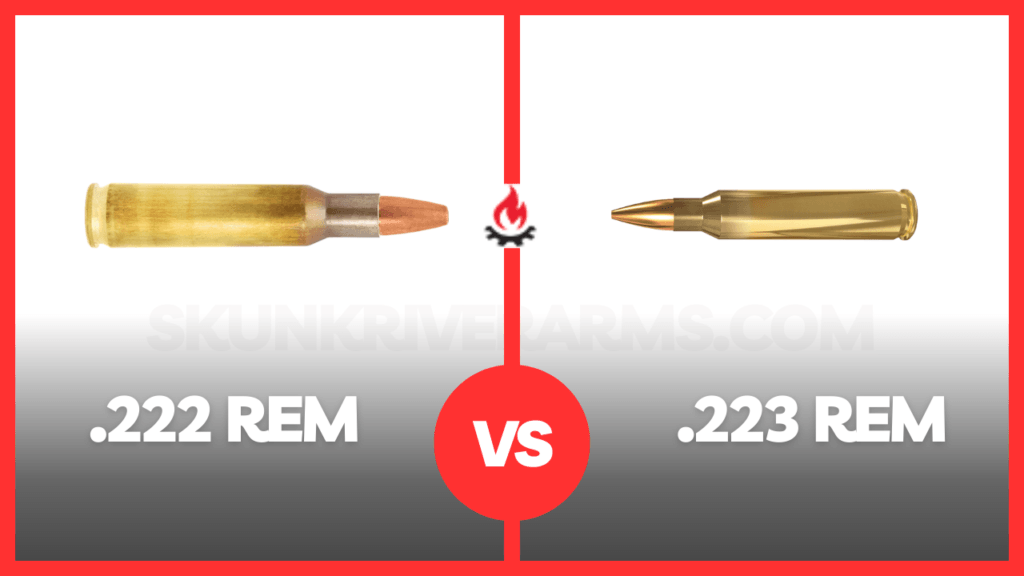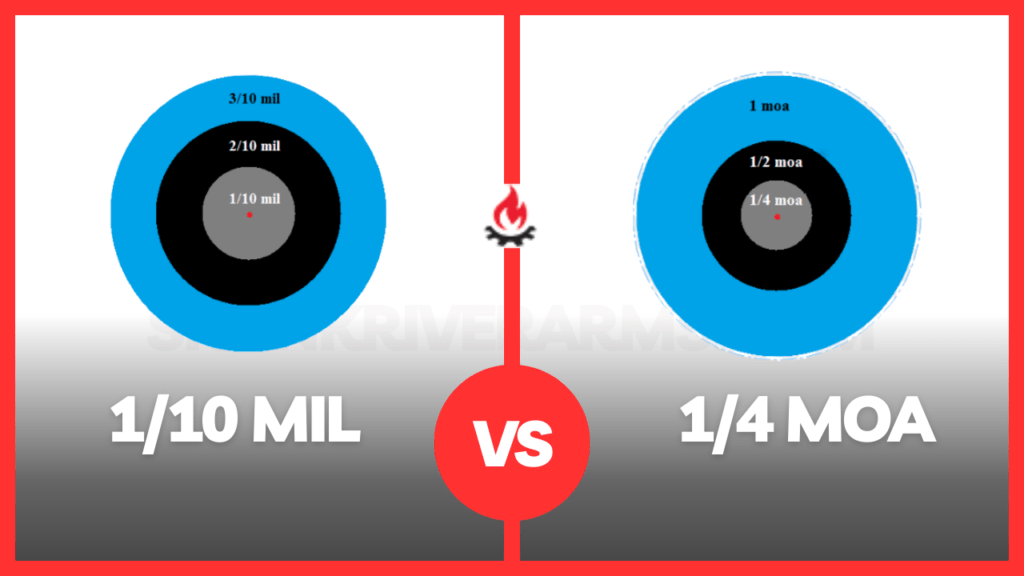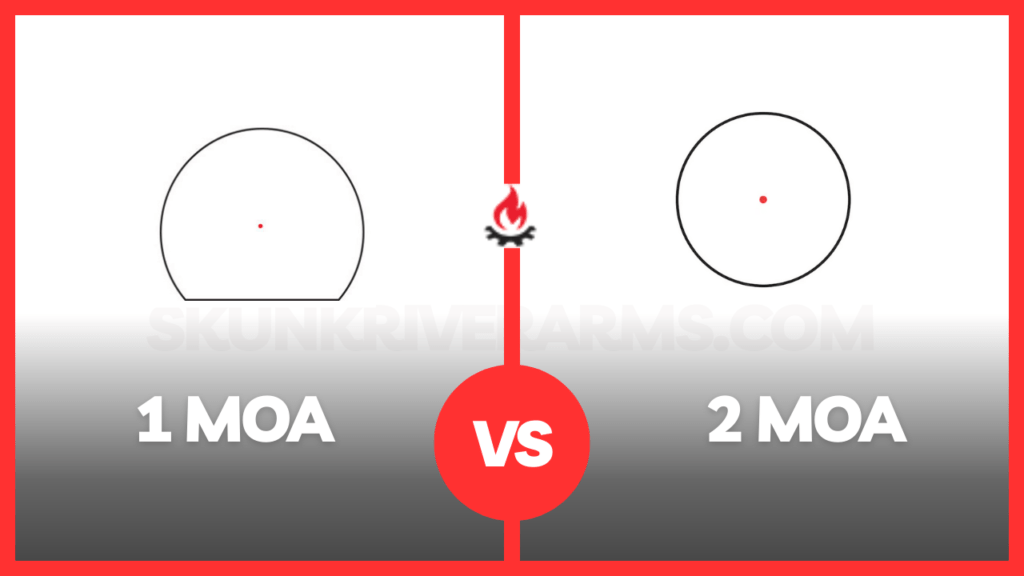When it comes to pistol calibers, there are tons of options to choose from. Yes, there are other handgun ammo besides 9mm as well, in case you didn’t know.
Jokes aside, .50GI vs 10mm has been the talk of the mouth for years now. It’s like civil war, you pick your side and stick to it.
Which side am I on? Probably the one rooting for both from the side? Is that even considered as a participant? Well, doesn’t really matter. I’m here to help you understand why this debate exists and why you should know about it.
Besides that, I would also like to help you choose the right ammunition for your task. Let’s start.
the .50 GI – Quick look
The .50 GI is a handgun ammo developed by Alex Zimmermann or Guncrafter Industries. The ammo has been in service since 2004 and it will continue to do so for a long time as well.
The performance of this caliber can be compared with a .45 ACP. Their pressure is quite similar. In terms of accuracy, the .50 GI has the .45 ACP beat.
It’s one of the largest legally allowed calibers that you can use in a semi-automatic handgun. It’s compared with a .50 Magnum often. But it has much less recoil than a magnum. Due to its limited availability, this one is not used by any security services. Very rarely, you will see civilians using this as their daily.
the 10mm – Quick Look
The 10mm also known as 10mm auto is a cartridge developed in 1983 and has been in service since then. It was used by the FBI as well in the aftermath of the 1989 FBI Miami shootout. While it was discontinued by the service shortly after, civilians have been using this for decades now.
With age, comes experience. Due to that, 10mm auto has larger followers and more reviews out there compared to .50 GI for example.
50 GI Vs 10mm Auto – Key Differences
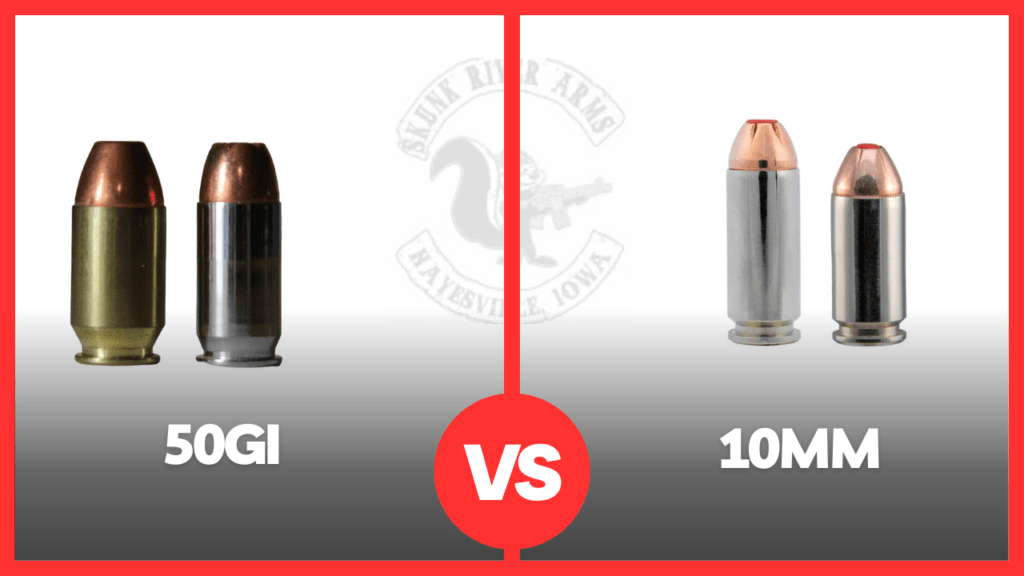
Velocity
The 50 GI comes in different grains. Depending on the grain weight of your bullet, it will highly vary in terms of maximum velocity.
For example, if you are using 185 Ggr SCHP, you will get around 1200 FPS in velocity and 591 ft-lbs in terms of energy.
That’s a lot for a handgun ammo, don’t you think?
As for the 10mm auto, it also depends on the type of ammunition you have. For example, if you are using XTP 10mm auto, you will get around 1265 FPS. Depending on the type of ammunition you have, you will also find around 600 to 700 ft-lbs of kinetic energy.
Both of these ammunition are excellent choices for any tasks you have in your mind.
Accuracy
The accuracy of both of these types of ammunition is extremely similar. Both of them are known for their close-quarter combat and devastating ability to hunt varmints at close range.
But if I were to nitpick, I would say the 50 GI is slightly more accurate than 10mm auto at the same distance.
Penetration
If you are using these ammo in the wild as a backup weapon or self-defense even, you would want to know how powerful they really are. They both have a lot of kinetic energy, that’s good and all. But it’s not necessarily true that more kinetic energy = deeper penetration.
If you are using a similar weapon and firing both of the ammunition at the same distance, the 10mm auto will have a deeper penetration than 50 GI.
Recoil
In terms of recoil, .50 GI is a lighter ammo and has much less recoil. It’s kind of hard to believe, right? But it is in fact true. Keep in mind one thing, the recoil difference between the two is not huge.
They are still quite similar and have very controllable recoil. But if you are to nitpick and want the easiest to-control recoil between the two, then you should opt for .50 GI.
Price
One of the reasons why .50 GI is more popular than 10mm auto is the price. 50 GI is usually more readily available and easy to maintain. If you are buying ammo in bulk, then you would find 50 GI to be more forgivable to your wallet.
Similarities between 50 GI vs 10mm auto
In terms of similarities, there are none. Both of them are quite different from each other in every possible aspect.
What is the popular use of 10mm and 50 GI?
Due to both of them being handgun ammo, they are used for a variety of tasks. You can use both of them for self-defense and hunting even.
But the most popular use of them is in casual shooting. They are also often seen in competition as well.
In short, they are both versatile. They can and will do anything that you wish to.
Closing Thoughts
As you can see, they are nothing alike. They are very different ammunition but share similar versatility.
If you are trying to save some money, then you can go for one above the other. But if you already have a weapon firing one of these ammo and considering to get the other weapon to fire the other ammo as well, I would say, you don’t need to.
The performance is similar or within the margin of error. Despite not having anything in similar, they both are quite well-performing. You cannot go wrong with either of these. That’s all for now. Will see you guys on the next one.

